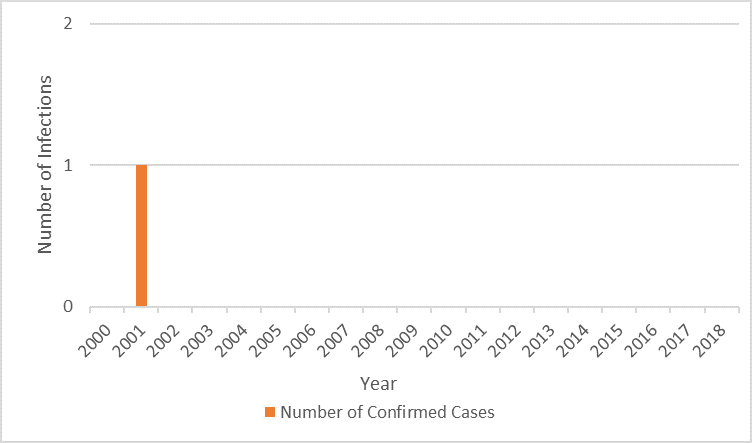- About CDC
- Diseases & Conditions
- Programs & Campaigns
-
Data & Statistics
- Taiwan National Infectious Disease Statistics System
- Statistics of HIV/AIDS
- Disease Surveillance Express
- Influenza Express
- National Notifiable Disease Surveillance Report
- Weekly Report of Enterovirus Infection
- Taiwan Healthcare-associated infection and Antimicrobial resistance Surveillance System
- Taiwan CDC Open Data Portal
- International Cooperation
-
About CDC
- Diseases & Conditions
-
Programs & Campaigns
-
Data & Statistics
- Taiwan National Infectious Disease Statistics System
- Statistics of HIV/AIDS
- Disease Surveillance Express
- Influenza Express
-
National Notifiable Disease Surveillance Report
National Notifiable Disease Surveillance Report
-
Weekly Report of Enterovirus Infection
Weekly Report of Enterovirus Infection
- Weekly Report 2025
- Weekly Report 2024
- Weekly Report 2023
- Weekly Report 2022
- Weekly Report 2021
- Weekly Report 2020
- Weekly Report 2019
- Weekly Report 2018
- Weekly Report 2017
- Weekly Report 2016
- Weekly Report 2015
- Weekly Report 2014
- Weekly Report 2013
- Weekly Report 2012
- Weekly Report 2011
- Weekly Report 2010
- Weekly Report 2009
- Weekly Report 2008
- Taiwan Healthcare-associated infection and Antimicrobial resistance Surveillance System
- Taiwan CDC Open Data Portal
- International Cooperation
- News
- Privacy Policy
- Security Policy
- Government Website Open Information Announcement
- Copyright Notice on Health Educational Materials
Background
Escherichia coli (E. coli) are normal bacterial flora of the human gastrointestinal tract and can be classified by their O and H antigens. When these strains acquire certain genetic material, they can become pathogenic. Enterohemorrhagic Escherichia coli (EHEC) are strains capable of producing Shiga toxin, and are also referred to as Shiga–toxin producing E. coli or STEC, and sometimes called verocytotoxic E. coli (VTEC).
Since the initial recognition of severe bloody diarrhea due to E. coli O157:H7 infection in the United States in 1982, outbreaks and sporadic infections have been attributed to EHEC worldwide. After that, over 70 EHEC sereogroups have been isolated from ill patients, include O26, O111, O103, O45, O145 and O121. Cattle are the most important reservoir of STEC O157, other ruminants including sheep, goats and deer may carry STEC, too. People are infected mainly through ingestion of contaminated food or direct contact with animals or their environment. Human may serve as a source for person–to–person transmission.
The most effective protective measures are practicing good hand washing and food safety. Early recognition, supportive care and monitoring for the development of microangiopathic complications, such as hemolytic–uremic syndrome (HUS) can substantially lower the risk of medical complications and death.
Epidemiology
EHEC infection is an important problem in North America, Europe, Japan, Australia, and the Southern Cone region of South America, however, it is not endemic in Taiwan. EHEC infection is one of the Category 2 communicable diseases in Taiwan. Clinicians report around 10-18 suspected cases per year, most of them were excluded. Over the years, there has only been one confirmed case in Taiwan, which was a 6-year-old child in 2001.
Figure.Number of EHEC Infections by Year– Taiwan, 2000-2018 
EHEC Surveillance in Taiwan
- Taiwan National Infectious Disease Statistics System–Enterohemorrhagic E. coli (EHEC) Infection
- Self–reporting through the toll–free 1922 hotline.
Prevention and Control
- Although there has been no confirm case in Taiwan in recent years, Taiwan CDC continues to monitor and detect cases.
- Taiwan CDC also implements awareness campaigns concerning personal hygiene and food safety tips.
What is Enterohemorrhagic Escherichia coli (EHEC) infection?
-
- EHEC are strains capable of producing Shiga toxin and typically cause bloody diarrhea. The incubation period is 2–10 days, with a median of 3–4 days for most serotypes. The symptoms of EHEC infections vary for each person but often include severe stomach cramps, diarrhea (often bloody), and vomiting. Most people get better within 5–7 days. Some infections are very mild, but others are severe or even life–threatening.
- How is EHEC transmitted?
- Transmission usually occurs through ingestion of food contaminated with ruminant feces and direct contact with infected animals or their environment. Person–to–person transmission or waterborne transmission can also occurred. People have gotten infected by eating food prepared by infected persons who did not wash their hands well after using the toilet and by swallowing contaminated lake water while swimming.
- What can be done to reduce the risk of acquiring EHEC?
- Prevention of EHEC infection requires a reduction in fecal soilage of meat during slaughter and processing. Wash hands with soap and water thoroughly after using the bathroom or changing diapers, before preparing or eating food and after contact with animals or their environments. Proper cooking of foods is essential.
- WHO|Escherichia coli Infections
- USA CDC|E.coli
Images

Attached Files
About CDC
Data & Statistics
- Taiwan National Infectious Disease Statistics System
- Statistics of HIV/AIDS
- Disease Surveillance Express
- Influenza Express
- National Notifiable Disease Surveillance Report
- Weekly Report of Enterovirus Infection
- Taiwan Healthcare-associated infection and Antimicrobial resistance Surveillance System
- Taiwan CDC Open Data Portal

